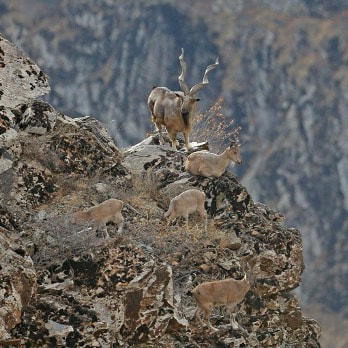Welcome to the website of the IUCN Caprinae Specialist Group
The Caprinae Specialist Group of the International Union for the Conservation of Nature is a network of volunteer experts working on the the ecology, behavior, taxonomy, conservation and management of wild Caprinae (wild sheep, goats, goats-antelopes, muskox and allies) from around the world. We aim to promote the conservation of Caprinae and their habitat, promote research on all aspects of Caprinae biology, including the conservation of mountain ecosystems, and provide advice on the biology and conservation of Caprinae to governments, NGOs and researchers.
Photo by By H.Sels (Own work) [CC BY-SA 4.0 via Wikimedia Commons]
News from the Caprinae world
April 2024
THE NEW ISSUE OF "CAPRINAE NEWS" IS ONLINE, CHECK IT OUT HERE OR IN THE NEWSLETTER SECTION!
THE NEW ISSUE OF "CAPRINAE NEWS" IS ONLINE, CHECK IT OUT HERE OR IN THE NEWSLETTER SECTION!
9th World Mountain Ungulate Conference

We are glad to inform you that the 9th World Conference on Mountain Ungulates will be held on October 12-15, 2024 in Dushanbe, Tajikistan. Registrations will be open by March 2024. The deadline for early registration is June 31, 2024, the deadline for abstract submission is 15th May 2024. More info on the conference and registration and abstract submission please contact via email [email protected], the website 9wcmu.com and X twitter.com/9WCMU.
As in the spirit of past editions, the goal of the conference is to share the most recent and interesting results of research on mountain ungulates as well as to provide networking opportunities for researchers and wildlife managers. We will cover several topics (see the list below), with the ambitious aim of facilitating the integration of different research fields and connecting them with management and conservation.
As in the spirit of past editions, the goal of the conference is to share the most recent and interesting results of research on mountain ungulates as well as to provide networking opportunities for researchers and wildlife managers. We will cover several topics (see the list below), with the ambitious aim of facilitating the integration of different research fields and connecting them with management and conservation.
